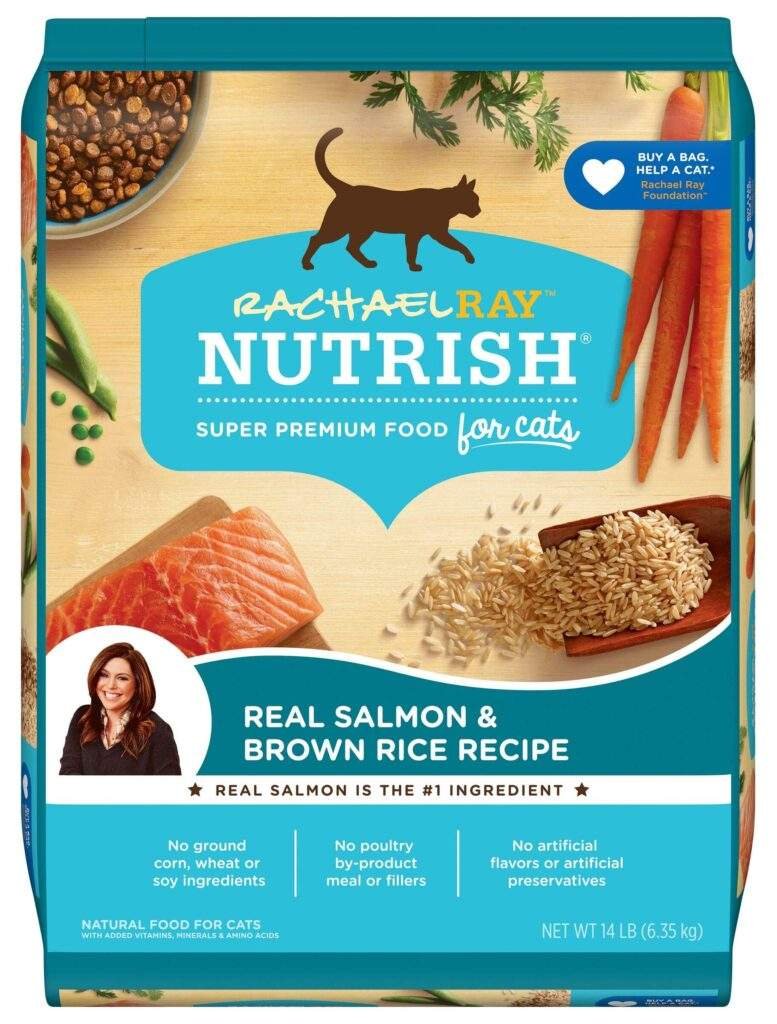Top 10 Spring Seasonal Fruits to Enjoy
Table of Contents
As the chill of winter fades, spring ushers in a new season of growth.
With it comes a bounty of fresh produce, particularly spring fruits.
These fruits are not only delicious but also packed with essential nutrients.
In this article, we’ll explore the top 10 spring fruits to enjoy.
From strawberries to blueberries, these fruits are at their peak in spring.
They offer a variety of flavors, from sweet to tart, and can be used in numerous culinary creations.
But why focus on spring fruits?
Eating seasonally allows you to enjoy fruits at their freshest.
It also supports local farmers and reduces the environmental impact of long-distance shipping.
Moreover, each fruit comes with its unique health benefits.
Whether you’re a food enthusiast or simply looking to add more fruits to your diet, this guide is for you.
We’ll delve into the health benefits, culinary uses, and availability of these spring fruits.
So, let’s embark on this flavorful journey and discover the fresh picks of the season.
Why Choose Spring Fruits?
Spring fruits are a delight to the senses.
They bring a burst of color to our plates and a variety of flavors to our palates.
But beyond their aesthetic and gustatory appeal, there are several reasons to choose spring fruits.
Firstly, spring fruits are at their peak in terms of flavor and nutrition.
When fruits are in season, they are allowed to fully ripen before being harvested.
This results in fruits that are not only tastier but also packed with more vitamins and minerals.
Secondly, choosing spring fruits supports local agriculture.
By buying fruits that are in season, you are likely supporting local farmers and contributing to your local economy.
Lastly, choosing spring fruits is a more sustainable choice.
Fruits that are in season require less energy to grow and transport, reducing their carbon footprint.
So, by choosing spring fruits, you’re not just treating your taste buds, but also promoting your health, supporting local farmers, and making a more environmentally friendly choice.
The Health Benefits of Spring Fruits
Spring fruits are not just delicious, they’re also packed with health benefits.
Each fruit comes with its unique set of nutrients that can boost your health in various ways.
For instance, strawberries are rich in vitamin C and antioxidants.
These nutrients can help boost your immune system and protect your body from damage by free radicals.
Cherries, on the other hand, are known for their anti-inflammatory properties.
They can help reduce inflammation in the body and may even help with sleep due to their natural melatonin content.
Apricots are a great source of vitamins A and C, and can help improve your skin health.
Pineapples contain bromelain, a digestive enzyme that can aid in digestion.
Mangoes are packed with vitamins A and C, and are great for boosting your immune system.
Rhubarb, while technically a vegetable, is rich in fiber and can aid in digestion.
Kiwifruit is another excellent source of vitamin C, and its high fiber content can help keep your digestive system healthy.
Lemons are packed with vitamin C and can help detoxify the body, while avocados are rich in healthy fats that can help lower bad cholesterol levels.
Lastly, blueberries are a powerhouse of antioxidants and can help protect your body from damage by free radicals.
“
So, incorporating a variety of spring fruits into your diet can help boost your health in numerous ways.
From boosting your immune system to aiding in digestion, the health benefits of spring fruits are truly impressive.
How to Select and Store Spring Fruits
Selecting and storing spring fruits properly can ensure you enjoy them at their best.
When selecting fruits, look for those that are firm, but not too hard.
They should be free from bruises, cuts, or other signs of damage.
The fruit should also have a fresh, pleasant aroma.
For instance, a ripe pineapple will have a sweet, tropical smell.
When it comes to storing spring fruits, most can be kept at room temperature until they ripen.
Once ripe, they should be stored in the refrigerator to prolong their freshness.
Here are some specific tips for some spring fruits:
- Strawberries and blueberries: Store in the refrigerator in a single layer, if possible, to prevent them from getting squashed.
- Cherries: Keep in a plastic bag in the refrigerator.
- Apricots, mangoes, and pineapples: Store at room temperature until ripe, then refrigerate.
- Rhubarb: Wrap in plastic and refrigerate.
- Kiwifruit: Store at room temperature until ripe, then refrigerate.
- Lemons: Store at room temperature or in the refrigerator.
- Avocados: Store at room temperature until ripe, then refrigerate.
Remember, it’s best to consume spring fruits as soon as possible after purchasing to enjoy their optimal flavor and nutritional benefits.
Proper selection and storage can help ensure you get the most out of your spring fruits.
1. Strawberries: A Sweet Start to Spring
Strawberries are a quintessential spring fruit.
Their arrival at farmers’ markets and grocery stores signals the start of warmer days.
These berries are known for their bright red color, sweet taste, and delightful aroma.
They’re not just delicious, but also packed with health benefits.
Strawberries are an excellent source of vitamin C, manganese, folate, and potassium.
They also contain antioxidants, which can help protect your body from damage by free radicals.
Here are some ways to enjoy strawberries:
- Toss them in a salad for a sweet and tangy twist.
- Blend them into a smoothie for a refreshing drink.
- Use them in baking for a burst of flavor.
- Make a strawberry sauce to drizzle over pancakes or waffles.
- Simply enjoy them fresh as a healthy snack.
When selecting strawberries, look for ones that are bright red with fresh, green caps.
They should be firm but not too hard.
Avoid strawberries with bruises, cuts, or mold.
Remember to store them in the refrigerator and consume them within a few days for the best taste and freshness.
Strawberries truly are a sweet start to spring.
2. Cherries: Blossoming with Antioxidants
Cherries are another delightful spring fruit.
They come into season in late spring and are a treat to look forward to.
There are two main types of cherries: sweet and tart.
Both are packed with nutrients and offer health benefits.
Cherries are rich in antioxidants, particularly anthocyanins, which give them their vibrant color.
These antioxidants can help reduce inflammation and protect against chronic diseases.
Here are some ways to enjoy cherries:
- Eat them fresh as a snack.
- Use them in baking, such as pies and tarts.
- Add them to salads for a burst of color and flavor.
- Make a cherry sauce to serve with meat or desserts.
- Blend them into a smoothie for a nutritious drink.
When choosing cherries, look for ones that are firm, shiny, and deep red or purple in color.
Avoid cherries that are soft, shriveled, or have blemishes.
Store them in the refrigerator and consume them within a few days for the best taste.
Cherries, with their sweet taste and health benefits, are a spring fruit not to be missed.
3. Apricots: A Vitamin-Rich Spring Delight
Apricots are a spring fruit that often gets overlooked.
They come into season in late spring and are worth seeking out.
Apricots are a good source of vitamins A and C, and they also provide dietary fiber.
Their sweet, slightly tart flavor makes them versatile in both sweet and savory dishes.
Here are some ways to enjoy apricots:
- Eat them fresh as a snack.
- Use them in baking, such as pies and tarts.
- Add them to salads or grain dishes for a sweet touch.
- Make apricot jam or preserves.
- Grill them for a delicious dessert or side dish.
You May Also Like: The Best Top 10 Winter Fruits to Enjoy
When choosing apricots, look for ones that are firm, but yield to gentle pressure.
They should have a rich orange color and a sweet aroma.
Avoid apricots that are green, overly soft, or have blemishes.
Store them at room temperature until ripe, then refrigerate.
With their unique flavor and nutritional benefits, apricots are a spring fruit to add to your shopping list.
4. Pineapples: Tropical Flavor and Digestive Health
Pineapples are a tropical fruit that reaches its peak in the spring.
They are known for their sweet, tangy flavor and juicy texture.
Pineapples are rich in vitamin C and manganese, and they also contain bromelain, an enzyme that aids digestion.
Here are some ways to enjoy pineapples:
- Eat them fresh as a snack or dessert.
- Use them in fruit salads or smoothies.
- Grill them for a sweet and smoky side dish.
- Add them to stir-fries or curries for a tropical twist.
- Make pineapple salsa or chutney.
When choosing pineapples, look for ones that are heavy for their size.
The leaves should be green and fresh-looking, and the base should have a sweet, fruity smell.
Avoid pineapples with brown leaves, soft spots, or a fermented smell.
Store them at room temperature until ripe, then refrigerate.
With their tropical flavor and digestive health benefits, pineapples are a spring fruit to savor.
5. Mangoes: The King of Spring Fruits
Mangoes, often referred to as the “king of fruits,” become readily available in spring.
They are known for their sweet, juicy flesh and rich, tropical flavor.
Mangoes are packed with vitamins A and C, and they also provide dietary fiber.
Here are some delicious ways to enjoy mangoes:
- Eat them fresh as a snack or dessert.
- Use them in fruit salads or smoothies.
- Make a mango salsa for a sweet and spicy kick.
- Add them to stir-fries or curries for a tropical flavor.
- Make a refreshing mango sorbet or ice cream.
When choosing mangoes, look for ones that yield slightly to pressure.
The skin should be smooth and the fruit should have a fruity aroma at the stem.
Avoid mangoes with wrinkled skin or a sour smell.
Store them at room temperature until ripe, then refrigerate.
With their sweet, tropical flavor and health benefits, mangoes are a spring fruit not to be missed.
You might also like: Carefully selected Amazon best selling and top rated Weight Loss products and Accessories

6. Rhubarb: The Vegetable That Thinks It’s a Fruit
Rhubarb is a unique addition to our list of spring fruits.
Technically, it’s a vegetable, but its tart stalks are often used like a fruit in cooking.
Rhubarb is rich in vitamin K and fiber, and it also provides calcium and antioxidants.
Here are some tasty ways to enjoy rhubarb:
- Stew it with a little sugar and use it as a filling for pies or crumbles.
- Make a tangy rhubarb compote to serve with yogurt or ice cream.
- Use it in savory dishes, like a rhubarb and ginger chutney.
- Make a refreshing rhubarb lemonade or cocktail.
- Try it in a rhubarb and strawberry jam.
When choosing rhubarb, look for firm, crisp stalks with a bright, intense color.
Avoid stalks that are limp or have blemishes.
Store rhubarb in the refrigerator, wrapped in plastic, for up to a week.
Remember, only the stalks are edible – the leaves are toxic and should be discarded.
Rhubarb’s unique flavor and versatility make it a spring favorite, despite its vegetable status.
7. Kiwifruit: A Zesty Boost of Vitamin C
Kiwifruit, with its bright green flesh and tiny black seeds, is a delightful spring fruit.
It’s not only delicious but also packed with nutrients, particularly vitamin C.
In fact, a single kiwi can provide more than 100% of your daily vitamin C needs.
Here are some fun ways to enjoy kiwifruit:
- Slice it and add it to your morning cereal or yogurt.
- Use it in a tropical fruit salad with mango and pineapple.
- Blend it into a green smoothie for a vitamin C boost.
- Make a kiwi salsa to serve with grilled fish or chicken.
- Try it in a kiwi and banana loaf or muffins.
When selecting kiwifruit, look for fruits that yield slightly to pressure.
Avoid fruits that are very soft, shriveled, or have damp spots.
Store ripe kiwifruit in the refrigerator to prolong its freshness.
Kiwifruit can be eaten skin and all, just make sure to wash it well before eating.
With its vibrant color, tangy-sweet flavor, and impressive nutrient profile, kiwifruit is a spring fruit star.
8. Lemons: Fresh Citrus Flavors of Spring
Lemons, with their bright yellow color and tangy flavor, are a staple in many kitchens.
While they are available year-round, lemons are particularly fresh and flavorful in spring.
They are a great source of vitamin C and can be used in a variety of ways to add a zesty kick to your meals.
Here are some ideas to incorporate lemons into your spring dishes:
- Squeeze fresh lemon juice over salads, grilled fish, or roasted vegetables.
- Use lemon zest to add a citrusy flavor to baked goods and desserts.
- Make a refreshing lemonade or add a slice of lemon to your water for a vitamin C boost.
- Preserve lemons in salt to use in Moroccan and Middle Eastern recipes.
- Try making a tangy lemon curd to spread on toast or fill pastries.
When choosing lemons, look for ones that are firm, bright yellow, and heavy for their size.
Avoid lemons that have soft spots, are dull in color, or feel light.
Store lemons at room temperature if you plan to use them within a week, or in the refrigerator for longer storage.
Remember to wash lemons thoroughly before zesting or slicing to remove any residue on the skin.
With their fresh citrus flavor and versatility, lemons are a spring fruit not to be missed.
You Might Like: The Benefits of Dietworks Apple Cider Vinegar
9. Avocados: Creamy Goodness in Season
Avocados, with their creamy texture and mild flavor, are a favorite among many.
While they are available throughout the year, spring marks the peak season for avocados.
They are a great source of healthy fats, fiber, and various vitamins and minerals, making them a nutritious addition to your diet.
Here are some ways to enjoy avocados this spring:
- Mash ripe avocados to make a classic guacamole.
- Slice avocados and add them to salads, sandwiches, or toast.
- Blend avocados into smoothies for a creamy texture and added nutrients.
- Use avocados as a healthy substitute for butter in baking.
- Try making an avocado-based dressing for your salads.
When selecting avocados, look for ones that are firm but yield to gentle pressure.
Avoid avocados that have dark blemishes on the skin or feel overly soft.
Store unripe avocados at room temperature until they ripen, then move them to the refrigerator to slow down the ripening process.
Remember to wash avocados before cutting to prevent any dirt or bacteria on the skin from getting into the fruit.
With their creamy goodness and health benefits, avocados are a spring fruit that you’ll want to enjoy.
10. Blueberries: Late Spring’s Antioxidant Powerhouse of Spring Seasonal Fruits
Blueberries, with their sweet and slightly tart flavor, are a late spring delight.
They are packed with antioxidants, which can help protect your body against damage from harmful molecules called free radicals.
Blueberries are also a good source of fiber and vitamin C, making them a healthy choice for a snack or addition to meals.
Here are some ways to enjoy blueberries this spring:
- Eat them fresh as a snack or add them to your breakfast cereal or yogurt.
- Blend blueberries into smoothies for a refreshing drink.
- Use blueberries in baking, such as muffins, pies, or pancakes.
- Make a blueberry sauce or jam to spread on toast or stir into yogurt.
- Add blueberries to salads for a sweet and tangy flavor.
When selecting blueberries, look for ones that are firm, dry, and have a uniform, deep blue color.
Avoid blueberries that are shriveled or have any signs of mold.
Store blueberries in the refrigerator to keep them fresh for longer.
Remember to wash blueberries just before eating or using in recipes to prevent them from becoming mushy.
With their antioxidant power and delicious flavor, blueberries are a spring fruit that you’ll want to savor.
Spring Fruits in Culinary Creations
Spring fruits are not just for snacking. They can also be used in a variety of culinary creations.
From breakfast dishes to desserts, spring fruits can add a fresh and flavorful touch to your meals.
Here are some ways to incorporate spring fruits into your cooking:
- Use strawberries or blueberries in pancakes or muffins for a sweet start to your day.
- Add diced mango or pineapple to a salsa for a tropical twist.
- Toss cherries or apricots into a salad for a burst of color and flavor.
- Blend kiwifruit or avocado into a smoothie for a nutrient-packed drink.
- Bake rhubarb with strawberries for a classic spring dessert.
When cooking with spring fruits, remember to adjust the amount of sugar or other sweeteners in your recipe.
Spring fruits are naturally sweet, so you may need less sugar than you think.
Also, try to use spring fruits as soon as possible after buying to enjoy their peak flavor and freshness.
With a little creativity, you can turn spring fruits into delicious dishes that showcase their unique flavors and health benefits.
Spring Seasonal Fruits and Environmental Sustainability
Choosing spring fruits is not just good for your health. It’s also good for the environment.
When you buy fruits that are in season, you support local farmers and reduce the need for long-distance transportation.
This can help to lower greenhouse gas emissions and reduce your carbon footprint.
Here are some ways that choosing spring fruits can contribute to environmental sustainability:
- Supporting local agriculture: Buying spring fruits from local farmers can help to support local economies and promote sustainable farming practices.
- Reducing food miles: When fruits are in season, they don’t have to travel as far to reach your plate. This can help to reduce the amount of fossil fuels used in transportation.
- Minimizing waste: Fruits that are in season are often fresher and last longer, which can help to reduce food waste.
- Promoting biodiversity: Choosing a variety of spring fruits can help to promote biodiversity and protect the health of our ecosystems.
So next time you’re at the grocery store or farmers’ market, consider choosing spring fruits.
You’ll not only enjoy their fresh and flavorful taste, but also contribute to a more sustainable and healthy planet.
FAQs About Spring Seasonal Fruits
When it comes to spring fruits, you may have a few questions. Here are some common queries and their answers:
- What are the best spring fruits to eat for health benefits? All fruits offer health benefits, but some spring fruits are particularly nutrient-dense. Strawberries, cherries, and blueberries are packed with antioxidants. Avocados offer healthy fats, and pineapples and kiwifruits are high in vitamin C.
- How can I tell if a spring fruit is ripe? Ripeness can vary by fruit. Generally, ripe fruits feel firm but yield to gentle pressure. They also often have a fresh, fruity aroma.
- Can I eat spring fruits if I have dietary restrictions? Most fruits are naturally gluten-free and vegan. However, if you have specific dietary restrictions or allergies, it’s always best to consult with a healthcare professional.
- Why do some fruits taste better in spring? Fruits taste best when they’re in season. They’re harvested at their peak, which means they’re fresher, juicier, and more flavorful.
- Are organic spring fruits better? Organic fruits are grown without synthetic pesticides or fertilizers. Some people prefer them for their potential health and environmental benefits. However, the most important thing is to eat a variety of fruits, whether they’re organic or conventionally grown.
Remember, the best way to enjoy spring fruits is to eat them when they’re fresh and in season. So, make the most of the spring bounty and enjoy these delicious, nutritious fruits.
Conclusion: Embracing the Bounty of Spring
As we’ve explored, spring brings a bounty of fresh, flavorful fruits. From the sweet strawberries to the zesty lemons, each fruit offers unique flavors and health benefits. By incorporating these fruits into your diet, you can enjoy their peak taste and nutritional value.
Moreover, choosing spring fruits supports local farmers and promotes environmental sustainability. It’s a simple yet impactful way to contribute to your community and the planet. So, next time you’re at the market, reach for the fresh picks of the season.
In conclusion, spring is a season of renewal and growth. It’s the perfect time to refresh your diet and explore new flavors. So, embrace the bounty of spring fruits and enjoy the vibrant tastes of the season.







































